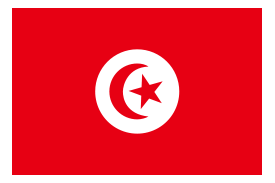Difference between revisions of "Language/Tunisian-arabic/Vocabulary/Counting-Objects-and-People"
m (Quick edit) |
m (Quick edit) |
||
| Line 90: | Line 90: | ||
[[Category:0-to-A1-Course]] | [[Category:0-to-A1-Course]] | ||
[[Category:Tunisian-arabic-0-to-A1-Course]] | [[Category:Tunisian-arabic-0-to-A1-Course]] | ||
==Related Lessons== | |||
* [[Language/Tunisian-arabic/Vocabulary/Basic-Phrases-in-Tunisian-Arabic|Basic Phrases in Tunisian Arabic]] | |||
* [[Language/Tunisian-arabic/Vocabulary/Popular-Sports-and-Games|Popular Sports and Games]] | |||
* [[Language/Tunisian-arabic/Vocabulary/Food|Food]] | |||
* [[Language/Tunisian-arabic/Vocabulary/Modes-of-Transportation|Modes of Transportation]] | |||
* [[Language/Tunisian-arabic/Vocabulary/Telling-Time-and-Dates|Telling Time and Dates]] | |||
* [[Language/Tunisian-arabic/Vocabulary/Days-of-the-Week|Days of the Week]] | |||
* [[Language/Tunisian-arabic/Vocabulary/Feelings-and-Emotions|Feelings and Emotions]] | |||
* [[Language/Tunisian-arabic/Vocabulary/Animal|Animal]] | |||
* [[Language/Tunisian-arabic/Vocabulary/Outdoor-Recreation-and-Leisure|Outdoor Recreation and Leisure]] | |||
{{Tunisian-arabic-Page-Bottom}} | {{Tunisian-arabic-Page-Bottom}} | ||
Revision as of 21:48, 14 March 2023
As a Tunisian Arabic language teacher with 20 years of experience, I have observed that one of the most essential skills for mastering the language is the vocabulary for numbers and counting. Naturally, this skill becomes even more important when it comes to counting objects and people. In this lesson, I will introduce you to the Tunisian Arabic vocabulary needed to count objects and people.
Counting Objects in Tunisian Arabic
In Tunisian Arabic, counting objects is relatively straightforward. Most objects can be counted using the basic numbers already covered in the previous lesson. However, there are a few specific words that are commonly used when counting certain objects, such as:
| Tunisian Arabic | Pronunciation | English Translation |
|---|---|---|
| تسعة ديانات | tissa dyānat | nine pearls |
| ستة قوارير | sitta qawārīr | six bottles |
| خمسة أرزاق | khamsa arzāq | five bags |
Here are some general examples:
- صحن – plate
- فنجان – cup
- ستار - curtain
- مصباح – lamp
- دولاب – cupboard
To count the objects listed above, you would simply use the corresponding basic number, such as:
- صحنان – two plates
- فنجانين – two cups
- ثلاث ستائر – three curtains
- أربع مصابيح – four lamps
- خمسة دولابات – five cupboards
Similarly, you can count larger quantities of objects using the basic numbers in Tunisian Arabic, such as:
- مئة صحن – one hundred plates
- ألف دولاب – one thousand cupboards
Counting People in Tunisian Arabic
Counting people in Tunisian Arabic can be slightly more complex than counting objects. This is because there are different words used to count people, depending on whether the person being counted is male or female. For example:
| Tunisian Arabic | Pronunciation | English Translation |
|---|---|---|
| رجلين | rjalīn | two men |
| امرأتين | imrātayn | two women |
| ثلاث نساء | thalāth nisā' | three women |
Here are some more examples:
- رجل – man
- امرأة – woman
- طفل – child
To count people, use the corresponding words depending on the gender of the person as follows:
- رجلان – two men
- امرأتان – two women
- طفلان – two children (either gender)
For larger numbers of people, you can use the basic numbers along with the appropriate word depending on gender:
- خمسة وعشرون رجلا – twenty-five men
- عشرين امرأة – twenty women
Remember, when counting people, it is important to use the appropriate word based on the gender of the person being counted.
In conclusion, counting objects and people in Tunisian Arabic requires some specific vocabulary. However, with practice, mastering this skill is relatively easy. Use the tables and examples provided in this lesson to practice counting objects and people in Tunisian Arabic. Good luck!
